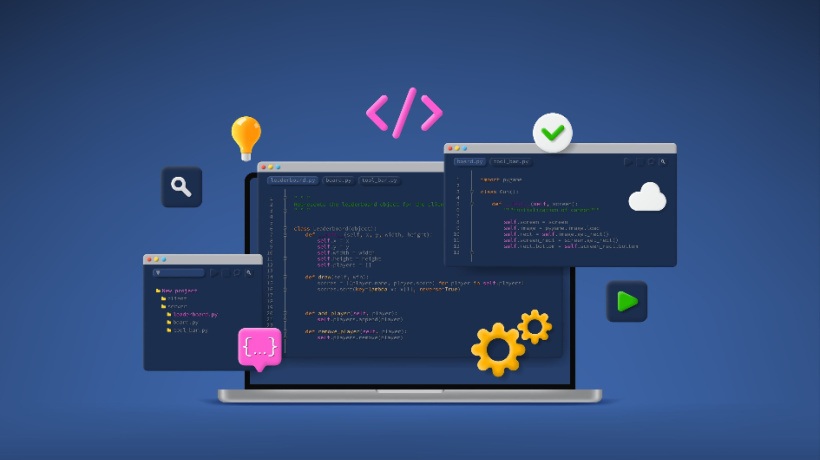Your 101 Guide To LMS Website Development
Want to learn something new? Just join an online course! It’s just that simple. Learning Management Systems support a range of eLearning platforms these days. An LMS is an advanced, learning-centered software application. It acts as a bridge that globally connects instructors and students. So yes, you can learn French, guitar, and even programming with a click of your mouse. The rise of Learning Management Systems has helped students learn beyond the classroom, whenever, wherever, and however they want. Not only students, but many educators found a way larger audience than before. Both of these factors combine to form a globally available and extremely informative education system.
The COVID-19 era gave a big push to eLearning businesses. And would you believe it? In 2022, the global digital education market stretched over $300 billion, with Learning Management Systems holding up for about half of this percentage. But how do you know what makes a good LMS website? And how can you make one yourself? This brings us to our next destination.
Core Elements Of An LMS
There are some simple yet effective factors that lead to an enhanced User Experience in an LMS. Building such a website is a challenging task due to its added requirements. While working on the development process of an LMS website, you should keep these factors on top of your list.
- Predictable design
When the system design is predictable, the user has to spend less time understanding its features. Due to this, the users can start their learning process sooner. - Excellent UI/UX
To ensure an easy User Experience, the widgets and icons should be responsive. A better User Interface helps develop a better User Experience, making the LMS successful. - Media support
While learning digitally, a user has to work with media forms ranging from images to PowerPoint presentations to PDFs. Taking a user-centered approach helps you understand the importance of incorporating media forms within the website. - Scalability
As the industry grows, scalability becomes an important factor to consider while developing an LMS. If not, a system holds a high chance of crashing as the number of users grows. - Personalization
You should understand that each individual has a different subject preference as well as a different learning pace. The concept of personalization enhances the User Experience by catering to a user with content built specifically for them.
These features provide great assistance to any user in their learning journey, contributing to a successful Learning Management System. Now that we have understood the important factors required for an accessible system, let’s get to the steps you must follow to generate a high-functioning, user-friendly learning management framework.
The Steps To LMS Website Development
1. Planning
From vacations to sleep schedules, every event needs planning. So does developing digital products. While developing an LMS website, proper planning helps you get an idea of how and where to allocate your resources according to the content. The website layout must be covered in this step, as it will give you an idea of where all the elements will be placed. Questions like why, where, what, and how regarding the LMS website must be worked upon in this step.
2. Key Elements
There are currently 73.8 million LMS users, 87% of whom are regularly active. As a result, in a Learning Management System, an interactive User Interface is as important as the content. There are some key elements that should be included in your Learning Management System so that it caters well to your users. Certain features enhance the overall business experience and hence must be a priority while developing an LMS. These features include:
- Account management
- Different website portals depending on whether the user is an instructor or a student
- Tools to measure student progress
- Gamification for active engagement and better learning
- Device compatibility for a range of devices
3. Choose The Right Stack
A stack is a combination of servers that is responsible for the development process and how your LMS website will turn out. The stack is basically the backbone of any website and hence must be reliable. The right stack eases the development process, and your website appears the way you wish. Selecting a framework can be efficiently accomplished by focusing on four main factors:
- Time of launch
- User requirements
- Scalability
- Security
4. Build An MVP
Building a Minimal Viable Product allows you to understand if the website fulfills its purpose. An MVP includes all the core functionality. It gives you a detailed description of the concept of the website. The purpose of an MVP is to help you test your website in a real-world setting from the point of view of a user. An outer perspective really helps you in assessing the website so you can further add or remove changes as required.
5. Final Product
The generation process of the final product begins in this step. The research, stack, UI/UX, and MVP all come together in this step and the process of generation of the final website kick starts. To avoid any setbacks, all the discussions made in the planning phase must be followed.
Conclusion
Learning Management Systems have been providing the public with easy-to-use platforms to assist their education in a variety of fields. When building a website for a Learning Management System, you should take a user-centered approach to make the website cater better to your users. A set of pre-defined instructions, as discussed in this article, will definitely simplify the development process for you and help you build a user-friendly and functional website.

